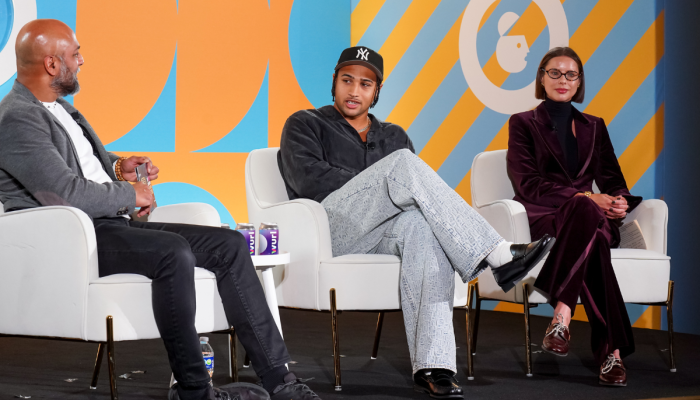FOMO (otherwise known as ‘Fear Of Missing Out’) was the overwhelming sensation I’d use to describe my first experience of SXSW. For six days, Austin becomes a vibrant epicentre for all things tech and digital, as the world’s leading innovators gather to share insight and industry forecasts. With 3,000 speakers featuring across the week, the first questions on my lips were “How do you take it all in? How do you ensure you don’t miss anything significant?”
Well, the honest answer is, you can’t - but don’t let that put you off. The gregarious nature of the SXSW community brought with it an abundance of on-site sharing platforms, with experts in Journalism to Behavioural Science proactively sharing the knowledge they consumed that day - so I was able to vicariously absorb as much information as I fancied (and curb my FOMO somewhat).
So, here it goes. Here are my three key trends of SXSW 2017. The themes that were discussed with most fervour; across the seminars, experiential pop-ups, late-night bars and beyond.
1: Our Moral Prerogative
Unsurprisingly, there was A LOT of discussion around the ethics of technological advancement and the responsibility that comes with innovation. After the US election, Brexit in the UK, and political polarisation across Europe, many seminars focused on the role that digital and tech have to uphold a fair society and ensure that the public are kept as informed as possible during times of political instability.
‘Fake News’ featured heavily as a topic of conversation. Its overuse in propaganda appears to have blurred the term’s original definition from “fictional information” into something resembling “an opinion I don’t agree with”. As a result of this, it has become the role of tech giants to ensure that the content being consumed by the public is as factually accurate as possible – unless specifically stated otherwise. This is something that Facebook, among others, are looking to roll out on their platform over the coming months. As brands, we need to remain vigilant about this wider narrative and veer on the side of caution when publishing content with a political slant.
Bursting ‘Filter Bubbles’ was another hot debate that took place around this topic. The fact that so many people in our industry were shocked by last year’s elections eluded to the huge disconnect between certain sectors of society. Reconnecting with our day-to-day consumer is a challenge being posed to brands and agencies alike, to ensure that our campaigns and messaging resonate with people from all walks of life and ultimately allowing us to connect - rather than divide - society. At Ogilvy, we developed a programme to address this, entitled ‘Get Out There’. Brands would be encouraged to do something similar in-house, to ensure that our messaging is always resonant with the full spectrum of our audience.
The final theme in this thread focused around the ‘society of the future’. What does employment look like in 10 years after Robotics render many of today’s jobs redundant? What is the role of Artificial Intelligence in improving our wellbeing? These topics mapped across a range of seminars from “Training the next generation to code” to “Increasing charitable donations through tech”. As our daily routine becomes more algorithm and less analogue, these are the corporate considerations that businesses need to deliberate as we forge a path for the next generation.
Trend 2: All the R’s; VR, AR, MR (and 360 video of course)
Virtual Reality, and its brothers in arms ‘Augmented Reality’ and ‘Mixed Reality’, were inevitably key focuses at the content roundtables this year, with many of the pop-up and experiential stands keen to show off their latest and greatest in this space.
Some of the more thought-provoking speakers raised challenges around the growth of 360 video, such as “how do we preserve the art of storytelling?” “Can we creatively direct a consumer through a 360 video in the style they are used to, rather than them worrying about missing key information?” Equally, the rediscovery of long-form content, particularly through the rapid popularisation of Live Video, was another trend that rose to the surface. Many are predicting that long-form video is set to make a comeback, a movement being similarly mirrored across many social platforms, with algorithms on news feeds set to re-prioritise longer videos, rather than the bite-size, snackable content that has been all the rage for the past few years. If this trend continues, I would recommend brands revisit their content strategies to accommodate the algorithmic updates.
The demos on show included break-through innovations such as ‘Anti-gravity VR’, ‘Live VR’ and, perhaps most significantly, ‘Shared VR’. For me, the real advancements are coming in the ‘Shared VR’ experiences. Although the engagement from wearing a headset and immersing yourself in a piece of content remains an unrivalled form of captivation; humans are innately social creatures. We’d all prefer to consume and share content (whether it be a film or live sports game) with our friends, family and peers than in silo – a trait that has been capitalised on by the rise of social media platforms for the past decade. Shared VR offers something that taps into this communal experience and could hold the key to breaking the consumer VR space. If I were to advise on one form of VR to experiment with over the coming year, it would be this.
Whilst VR is very exciting - and I found myself getting caught up in the widespread enthusiasm – it’s very easy to get ahead of yourself in an environment surrounded by tech nerds and 360 gurus. The sceptic in me says that VR for the everyday consumer could be some time away - after we break the social norms and relative hardware costs to bring this technology to the mainstream. We need to consider the fact that accessibility and affordability of headsets are some way off being conventional, social norms haven’t yet adapted to this consumption behaviour, whilst brands and creators are yet to identify the golden formula for giving consumers the best value from their content.
A word of advice would be to ask yourself before embarking on a project that involves 360 video or VR is “does this content truly bring value to my consumer, or - is it going to make them feel closer to my brand?” If the answers to either are “no”, then I would probably steer clear until the right opportunity presents itself.
Trend 3: Connected Homes, Connected Brands and Bots
The Internet of Things. The Amazon Echo. Google Home. You’ll have heard these terms bandied around for the past few years by excitable techies. You may even own some of them in your own household. Technically defined as “the inter-networking of physical devices, vehicles, buildings, and other items that connect and exchange data.” it essentially aims to make our home life more fluid and aligned. We’ve known it’s been coming for years, so why all the fuss at SXSW 2017? Because it’s no longer a futuristic ‘one day’ scenario in which your fridge re-orders milk before you’re out, or your heating system triggers on when your fitness band senses you’re the final stage of your sleep cycle – it’s a reality. There’s certainly an opportunity for brands here. Think ‘in-home advertising’; would you listen to a 15 second advert from an energy company before your ‘connected’ lights switch off IF they offered to pay some of your energy bill in exchange? Alternatively, from the advertiser’s perspective, how can you embed your brand in the consumer psyche so your target consumer selects your product as the fridge’s auto-order? Food for thought. (Pun intended).
Security was a hot topic on the table throughout the conferences. How do we ensure that our privacy is protected as our home and personal life becomes open source and surrendering personal data is a pre-requisite to a functioning lifestyle? How can we be sure that hackers aren’t going to rifle and pillage through our sensitive information? Amazon had to be quick to shut down rumours that the CIA control the Alexa software after this video surfaced online. As consumers become more tech savvy, brands and companies need to be more transparent about the data they’re capturing and what they intend to do with it. The modern day consumer now approaches brands with scepticism rather than trust, and it’s our role to ensure that our audience and customers are the first ones to advocate us, not point the finger, during times of crises.
Bots were another big focus of conversation within this segment. Without question, bots and messenger platforms are going to shape the future of customer interaction, and it’s our role to ensure that this is conducted in the most positive way possible. It’s envisioned that bots could eventually replace the services currently provided by the search engine, with customers going to messenger platforms for personalised one-to-one queries about work, travel, products, lifestyle, health and more. Whilst this is an exciting opportunity for brands to occupy an ever-growing space, we should approach with caution. Accountability is a key question that needs to be considered. If a brand’s bot provides someone with false or misleading information that results in a negative outcome, the brand is ultimately responsible and would face any consequences. On the flip side, there was much discussion around using bots for good; can bots be used to discourage smoking, can they provide a much needed support for childcare helplines, and could they assist in driving charitable donations during a refugee crisis? The real opportunity for brands will be using this emerging tech to become a force for good – it’s up to us to identify what that means for our brand, and how we best support this cause.
This piece was by Luke Bristow, Account Manager at Ogilvy PR London. To view the original post from Oglivy head here.



